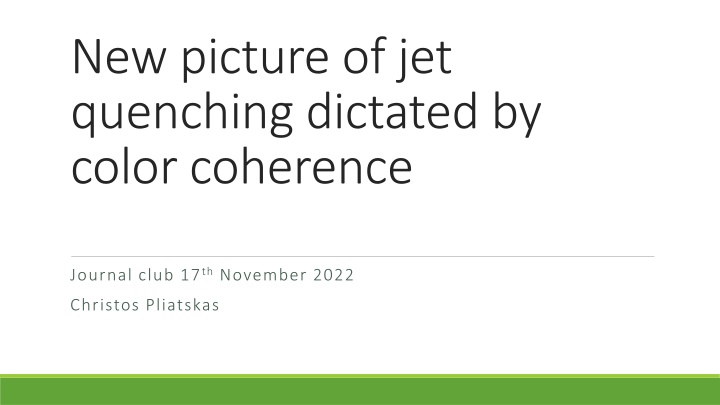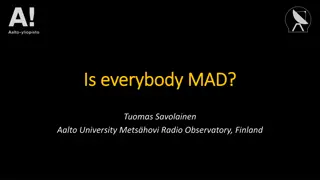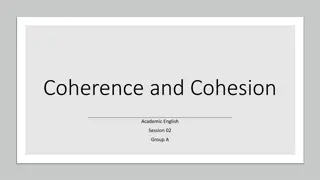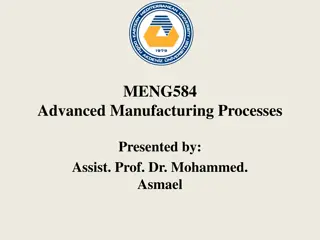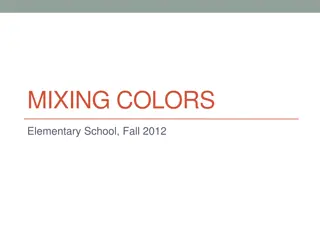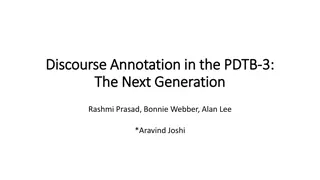Unveiling Color Coherence in Jet Quenching Studies
In this journal club presentation by Christos Pliatskas, explore the concept of color coherence in jet quenching phenomena in heavy ion collisions. Delve into the motivation behind refining subleading jet structures, the significance of color correlations, and expected observations in the context of gluon emissions. Dive into the antenna radiation model, the impact of the medium in heavy ion environments, and more. Gain insights into the resolution scale, effective emitters, and the influence of color correlation structures.
Download Presentation

Please find below an Image/Link to download the presentation.
The content on the website is provided AS IS for your information and personal use only. It may not be sold, licensed, or shared on other websites without obtaining consent from the author.If you encounter any issues during the download, it is possible that the publisher has removed the file from their server.
You are allowed to download the files provided on this website for personal or commercial use, subject to the condition that they are used lawfully. All files are the property of their respective owners.
The content on the website is provided AS IS for your information and personal use only. It may not be sold, licensed, or shared on other websites without obtaining consent from the author.
E N D
Presentation Transcript
New picture of jet quenching dictated by color coherence Journal club 17thNovember 2022 Christos Pliatskas
Introduction & Study motivation Suppression of high transverse momentum particles in heavy ion collisions Signature of jet quenching Motivation: Need for important refinement of the description of subleading jet structure in heavy ion collisions 2
Main notions and ideas Color coherence is essential to describe the branching process of multiple gluon emission in the vacuum case. Approximated previously with the antenna radiation pattern. For gluon emissions in medium, a jet can be described as a collection of effective emitters which may not necessarily correspond to the number of partons in the jet. Within those emitters a vacuum-like angular ordered emission takes place. The resolution scale is defined by the medium and not the kinematics of the gluon radiation. Partons separated in the transverse plane less than the resolution length remain correlated and act as a single emitter. 3
Expected observations A. Total jet energy loss is smaller compared to totally incoherent emission from each parton. B. The fragmentation pattern of the effective emitter will be the same as in vacuum 4
The antenna radiation model Antenna radiation approach: Soft gluon emission off a pair of highly energetic color correlated partons. Jet transverse mass: E* jet The wavelength of the emitted gluon needs to be compared to the transverse separation of the pair at the formation time of the gluon. Pair separation rperp= * tf If perp > rperp : Antenna seen as a single emitter. Unresolved partons. Formation time tf = k2perp/ If perp < rperp : Spectrum is superposition from each antenna component. Resolved partons. In terms of angular distribution of gluon emissions: small angles resolve the individual charges large angles behave as emitted from a total charge 5
In medium In the heavy ion environment, the medium presence introduces a new length scale med : the transverse size of color correlations seen by the probe A single parton in the medium will emit radiation with kperp >1/ med . This is described by the BDMPS-Z spectrum For the case of multiple simultaneously propagating partons, the medium induced component will be accompanied by a modification for the color correlation structure. 6
In medium (2) For a single antenna in a static homogeneous medium of size L the maximal decoherence is controlled by: q-hat: quenching parameter rperp = *L 1/ 2med= q-hat*L c = 12 ( med/L)2 7
For jets If jet< c, jet is not resolved by the medium Vacuum-like fragmentation pattern. Energy deplete coherently proportional to initiator charge. Color transparency for highly collimated jet. If jet> c, parts of the jet are resolved by the medium depending on their formation time. Partons reorganized in a group of effective emitters sensitive to the medium 8
Estimate for LHC kinematics In this study: Pythia signal embedded in an evolution model for the plasma which follows the Glauber model for a PbPb collision. Time dependent energy density along the direction of the jet was sampled from a 3D hydro model (hybrid model?) to define q-hat=2K* ( )3/4 Recluster jets with C/A algorithm using Rmed as resolution scale to probe the substructure 9
Estimate for LHC kinematics Unresolved probability: Probability the jet contains only a subjet of size Rmed within R=0.2 vs the partonic longitudinal momentum fraction (z). Hard fragments have large probability to remain unresolved. Probability decreases with increased medium resolution (K). Only mild dependence with R. Around this core lie soft fragments as seen from the leading subjet s missing energy fraction. 10
Prediction and consideration Prediction: Many jets in LHC HIC follow a vacuum fragmentation pattern. Aspects not included in this study but should also be considered: the effect of energy loss in the studied jet distributions. Expected consequence: Decrease of resolved jets for a specific energy especially considering the steep falling jet spectrum. For jets with multiple effective emitters, subleading subjets should be considered. Expected consequence: Dynamics will depend on the antenna particles separation during formation time. Replacing medium size L with formation time tf in Equation 1. Regardless, one can postulate a detailed picture of the shower including coherent branching medium. 11
Expansion to multiple subjets If rperp<< med then 0 so the parton is formed before the medium resolves the antenna constituents allowing induced radiation to only be coherently produced by the pair with kperp< 1/ med But radiation not induced by the medium is possible but due to angular ordering restriction, it s constrained to perp<rperp or kperp>> 1/ med. If rperp>> med interferences are cancelled by 1 and radiation is the result of two independent color charges. Radiation not induced by the medium is possible both for perp> med as well as perp< med. Antiangular ordering 12
Same picture but in reverse? The following section seems to sum up the preceding analysis od the multiple subjets case, but to me it is not entirely clear. Especially since the included inequalities look to express the opposite of the paper so far. Therefore, the antennas arising from hard modes inside the medium kperp>1/ med remain unresolved by the medium while those originating from softer ones kperp<1/ med are resolved. Particularly, hard modes of perp< med remain unresolved an create an effective core which fragments as in vacuum Any thoughts? 13
